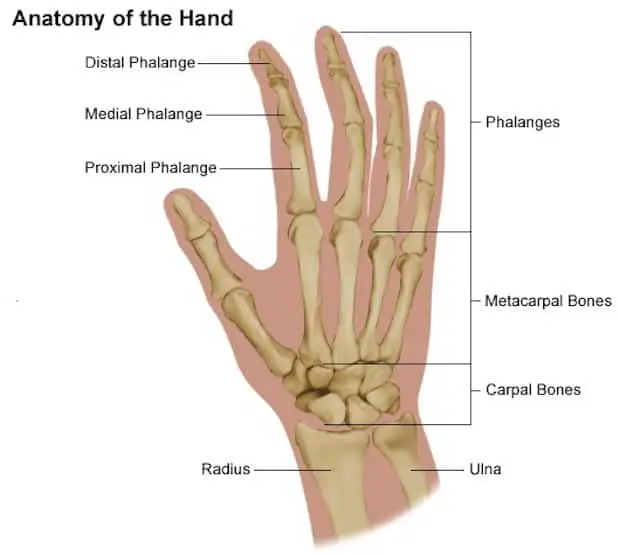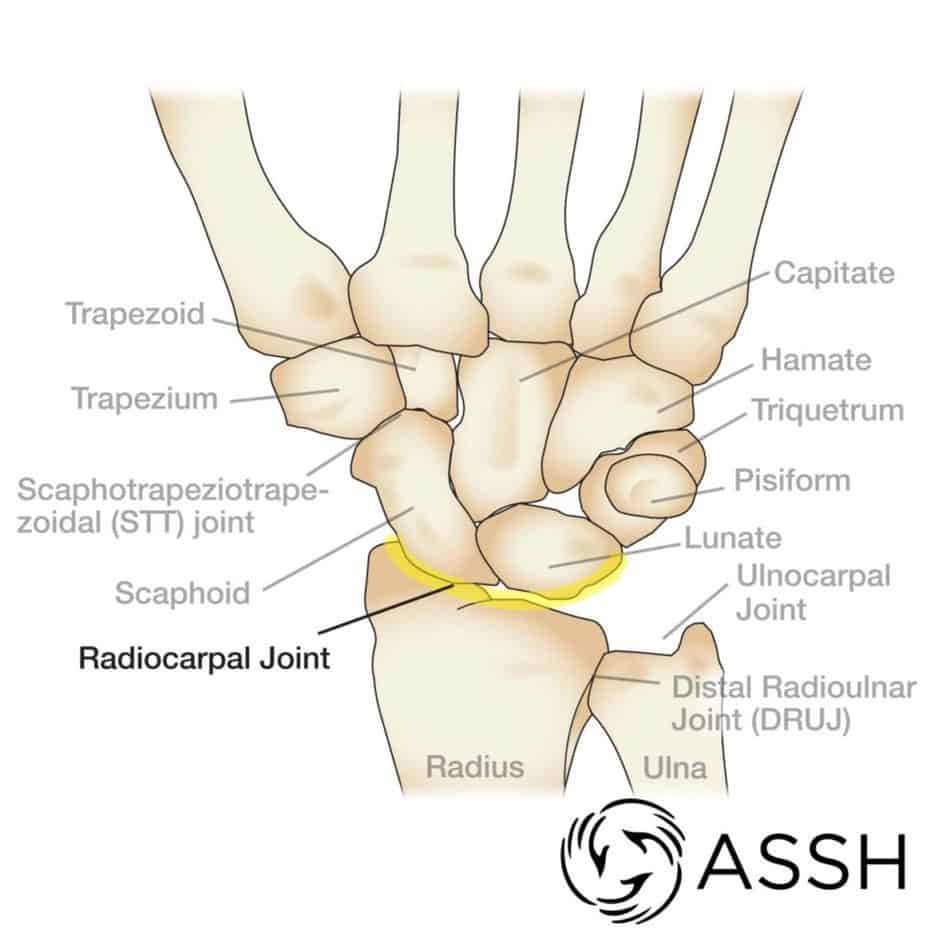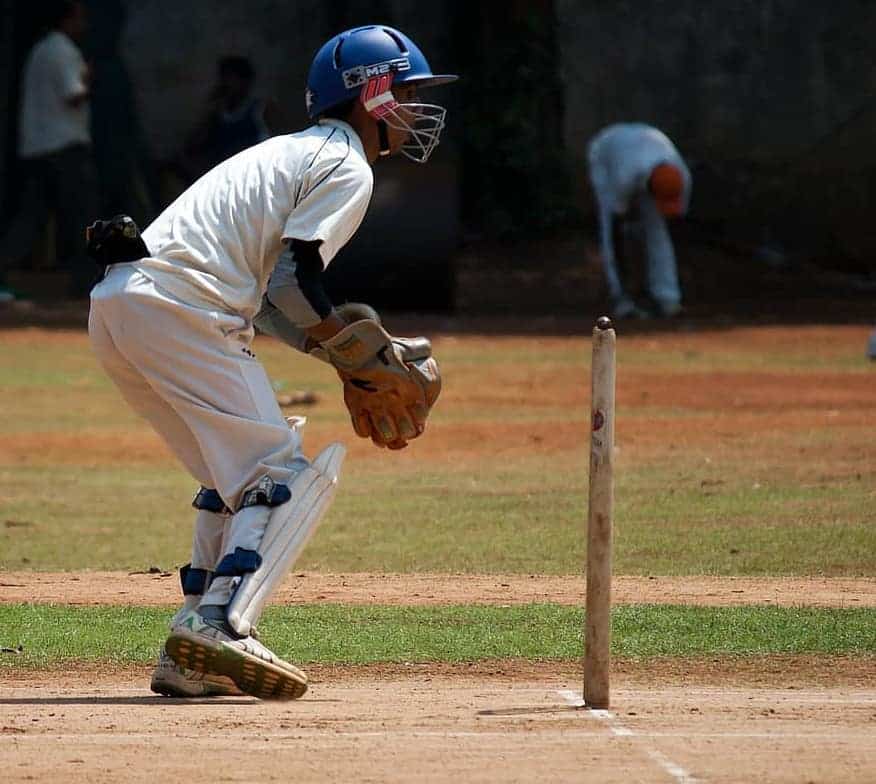Injuries are part and parcel of any sport. In Cricket, finger injuries are pretty common. We often see tapes around the fingers of the fielders. Many players use it during the practice as well. So, what is the deal with these finger tapes and why do cricketers use it on their fingers?
Cricketers tape their fingers to avoid injury from the impact of the hard cricket ball. Finger tapes help to propagate the impact of the cricket ball towards the wrist instead of the fingers and thus help in reducing the chance of an injury. Players also use tape to stop an existing injury from aggravating further.
Often wondered how these finger tapes are put on the fingers? Why do players change them during a long day in the field? How do these tapes really work? Would there be any effect on my game if I use them? Let’s go through these questions and more in the following article.
Reasons Cricketers Tape their Fingers
It is very common to find the cricketers wearing tapes on their fingers while they are out on the field. Let’s find out why they tape their fingers in the following article.
1. To avoid finger injuries
Injuries play a crucial role in a cricketer’s career, and fingers are the most vulnerable and injury-prone. Often, the fielders have to catch or stop the ball, traveling at lightning speed, with their fingers and palm. At times there could be bruises, sprains, or strains due to the impact. The leather cricket ball weighing around 160 grams, traveling at 100 mph could hurt the fingers substantially.
The tapes are usually worn on the joints of the fingers i.e the joints between Proximal Phalanges (PP) and the Middle Phalanges (MP) as shown in the image below

If the fast-moving ball hits the tip of the fielder’s finger i.e. at Distal Phalange (DP), the part above the Proximal Phalange (PP) gets a jolt, mostly away from the palm. This can cause serious injuries to the joints between the Phalanges bones.
If the fielder’s fingers are taped, the force generated by the impact of a fast-moving ball will propagate towards the Radiocarpal joint (wrist joint – shown below), which can comfortably bear the impact load generated.

2. To Prevent Ball from Slipping Away
There is another advantage of using finger tapes. The tapes on the fielder’s fingers offer considerable friction to stop the ball from slipping away from the hands in an attempt to catch or stop the ball
Do wicket-keepers use Finger Tape?

The wicket-keepers have to consistently deal with catching or stopping the ball as delivered by the bowlers if the batsman either misses or edges it. Some low or wide balls or some deliveries wobbling in the air could also hurt their fingers.
To prevent such injuries, the wicket-keeper binds the finger-joint with adhesive bandages (Elastoplasts), but if the keeper suffers from bruised finger-joints, such bandages are replaced by the tapes to avoid further damage.
Which type of Fielder benefits the most from the Finger Tapes?
The players who field in close-in positions are more prone to injuries, including finger injuries. These positions include slips, gully, point, short leg, silly point, short mid-on, and short mid-off. Let’s take a closer look at the overall fielding positions so that you can easily identify the close-in positions.
Fielding the ball at such close-in positions is a tough job especially in the absence of gloves. After the batsman hits the ball, the fielders get a fraction of a second to respond, and thus, at times, it becomes extremely difficult to get the hands in the correct position.
The use of the finger tapes proves to be very beneficial in such situations and can prevent major injuries to the fielder’s fingers.
How to Tape your Fingers Properly?
You want to wear finger tapes but don’t know how to proceed or not sure if the way you tape your fingers is right? Don’t worry. This section will address all your concerns. Firstly, it’s possible to tape your fingers on your own, however, it will be more convenient to have someone else do it for you.
Things you need to Tape your Fingers
Be ready with the following items before you start taping.
- Alcohol or antiseptic wipes
- Soft paddings such as foam, gauze, or cotton
- Medical cloth or zinc oxide tape
- Scissors
Steps to Tape your Fingers
Follow the steps mentioned below to tape your finger.
- Cut a few pieces of the finger tape and have them ready before you start the taping process.
- If you have cracks in the skin, clean the affected area using antiseptic wipes and dry the skin completely.
- Starting at the base, wrap the tape around the fingers. Wrap at least two to three times while applying gentle pressure as you wrap the tape.
- Be careful, don’t make it too tight. Make sure that you still have good blood circulation in the fingers. This can be verified by pressing the tips of your finger for a few seconds and then releasing it to see if they fill back up with blood. If it does, you are good to go.
It is very important to observe the fingers after taping. You need to watch out for the signs of infection or irritation. If you ever feel any pain or numbness in the fingers, then just remove the tape and redo the process.
Is it Legal for Cricketers to Put Tape on their Fingers?
As per the law 41.1 of cricket, fielders other than the wicket-keeper are not permitted to wear gloves or external leg guards. The fielders are permitted to protect their fingers from injuries by wearing the tapes with the consent of the umpires.
However, it is important to note that although the cricketers are permitted to wear tapes to avoid injuries or even prevent them from aggravating, umpires keep a special note of such players when they come in contact with the ball. The Laws of Cricket also state that a cricket ball should not come in contact with a foreign object.
Can you Wear Finger Tapes while Batting or Bowling?
Though it is legal to use finger tapes while fielding or batting, a bowler cannot have tapes on his finger while bowling. It is a must for the bowler to remove the tapes before bowling. The bowler can reapply the tape while going back to the fielding.
The bowlers may use finger tape while bowling on an injured finger only if the umpires and batsmen agree to it. In 2009, during one of the ODIs played between India and Sri Lanka, Ajantha Mendis was asked to remove the tape from his bowling fingers.
Note: If at all a bowler is allowed to wear the tape, only skin tone color finger tape might be allowed, as the white tape could distract the batsmen.
Batsmen are also allowed to use finger tapes while batting as they give no undue advantage to the batsman or aid them in any way.
Can you Play Cricket with a Broken Finger?
Although is it not advisable, some cricketers in the past have played with broken fingers. David Warner (Australia) played with the broken thumb in 2013. Haseeb Hameed (England) batted in 2016 with a very badly broken little finger. Most memorable is Graeme Smith (South Africa) playing in 2010 with a broken finger in a failed but valiant attempt to save the Test.
Though the injured batsman takes some pain-killer injection before the play, and the fractured finger is strapped securely, it takes a lot of courage and determination to play with a broken finger. Make sure you have a valid reason to do that.
We would highly advise against playing cricket with not just a broken finger, but with any injury at all!
I would highly recommend you to visit a doctor immediately and let the injury be healed completely before commencing the game once again.
What are the Other Ways to Prevent Finger Injuries?
Now that it’s clear about the legality and the significance of the finger tapes, let’s see other ways to avoid finger injuries.
Tip 1 – Improve the wicketkeeping and fielding techniques
While wicketkeeping, or fielding in general, the finger injury or any sort of injuries cannot be completely avoided. However, you can prevent such injuries, in terms of frequency and the intensity, by working on the fielding techniques. If you are going to use finger tape in the match, it is advisable to get accustomed to them during practice fielding drills.
Tip 2 – Work on batting technique
Uneven bounce in the pitch can at times hurt the fingers of a batsman. Batsmen must practice riding the bounce properly in the nets against the fast bowlers. Playing with soft hands and watching the ball till the last moment help as well. The use of well-cushined batting gloves is highly recommended.
Final Thoughts
Many players have lost golden opportunities in their careers because of injuries at the wrong time. Finger injury is one of the most common types of injury in cricket. Nothing trumps good fielding and ball gathering techniques when it comes to avoiding finger injuries.
However, accidents can still happen, and thus it is important to understand how to use finger tapes. I hope the above article has given you a sense of how to avoid finger injury using finger tapes and also an insight into other ways of avoiding finger injury. So use it well and be safe.
